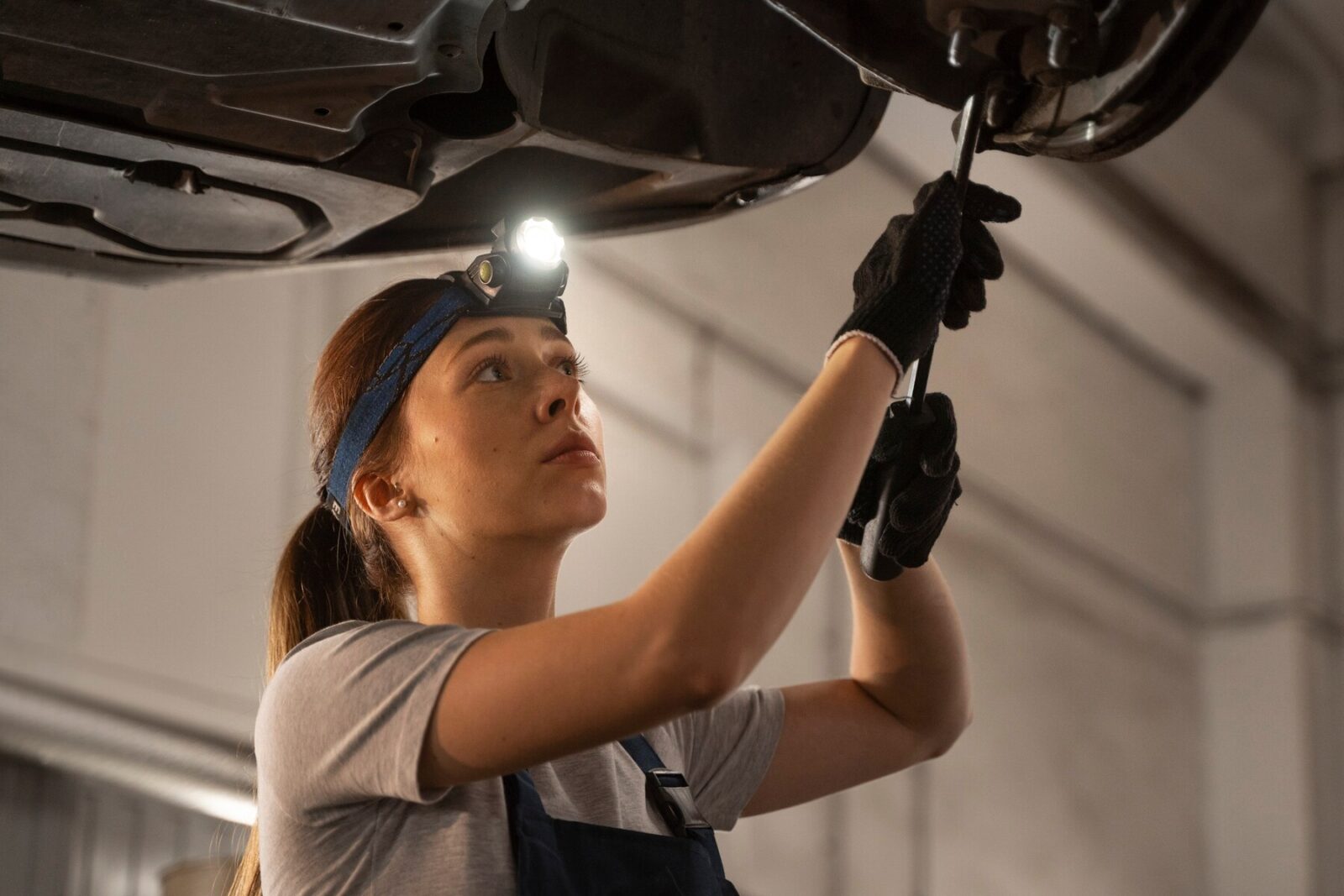
Essential PPE in the Food Industry: What You Need to Know
Overwhelmed by PPE options for food safety? Master your PPE selection for food workers safety with these practical tips.

Get 20€ off on your first order!
Choosing the right headlamp for your work environment can seem challenging, but this guide makes it easy. We’ll walk you through the key features like brightness, battery life, and waterproof ratings, so you can choose the perfect headlamp for your specific needs. By the end of this article, you’ll have all the information you need to make an informed, confident decision.
And once you’ve selected the right headlamp, we’ll guide you on how to pair it with other essential safety gear, ensuring you’re fully prepared for the job. Let’s get started on solving your headlamp needs and more!
For a broader look at related safety gear, consider pairing your headlamp with hard hats and safety helmets.
The brightness of a headlamp is measured in lumens. Higher lumens mean brighter light, but not every task requires maximum brightness. For instance:
Learn how to determine the ideal lumen output for your headlamp.
Battery life is essential for ensuring work is not interrupted. Headlamps typically use either rechargeable batteries or standard AA/AAA batteries:
Consider your work hours and access to charging points when making your choice. For instance, rechargeable headlamps are ideal for indoor environments where charging facilities are readily available, while replaceable battery headlamps are better suited for remote worksites or long shifts without easy access to power sources.
For outdoor or industrial environments, a headlamp’s ability to withstand water and dust is advantageous. Look for IP ratings:
Explore the importance of waterproof ratings for headlamps.
Most modern headlamps use LED technology, but halogen options are still available. Here’s a quick comparison:
| Feature | LED | Halogen |
| Brightness | High | Moderate |
| Energy Efficiency | Very efficient | Less efficient |
| Durability | Excellent | Moderate |
| Cost | Higher upfront | Lower upfront |
For a deeper dive, read our article on LED vs. Halogen Headlamps.
In construction, durability and high brightness are important. Look for headlamps with high lumens, reliable battery life and a durable, waterproof design.
For indoor environments, opt for headlamps with adjustable brightness and comfortable straps for extended wear. Lightweight designs can reduce fatigue during long shifts.
Mechanics benefit from focused, low-lumen headlamps that minimize glare while working on detailed tasks. Adjustable beam angles can also help focus light precisely where needed.
Discover headlamps specifically for construction work.

When purchasing headlamps, reliability is important. Here are some top suppliers in Europe:
Each supplier offers a range of options tailored to different professional needs.
While headlamps are essential, don’t overlook other safety gear. Hard hats and safety helmets are vital companions, especially in construction and industrial settings. Properly integrating a headlamp with your helmet can improve safety and convenience. Learn more about selecting the right headgear.
We hope this guide has provided valuable insights into selecting the best headlamp for your work, from brightness and battery life to waterproof ratings. Whether you’re working in construction, automotive, or warehousing, we’re here to ensure you have the right equipment for the job.
Explore our full range of headlamps on Droppe, featuring trusted brands like KASK, Portwest, and Skydda, all just a click away.
For additional safety gear, check out our guide on bump caps and hard hats.
If you have any questions or need assistance in choosing the perfect headlamp, don’t hesitate to reach out. We’re always here to help, ensuring you stay safe and confident in every decision.
– The Droppe Team
Choose lower lumens for close-up tasks and higher lumens for outdoor or demanding jobs.
Yes, many headlamps feature adjustable straps for a comfortable fit with glasses.
Battery life varies by model, but most headlamps last between 3 to 10 hours depending on the brightness setting.
Yes, look for headlamps with higher lumens and an IPX7 or IPX8 waterproof rating.
Many headlamps are designed to perform in extreme conditions, but always check the temperature range specified by the manufacturer.
Thank you! You've signed up for our newsletter.



















Overwhelmed by PPE options for food safety? Master your PPE selection for food workers safety with these practical tips.

Struggling to maintain clear vision in demanding environments? This guide is here to help. By the end, you’ll know exactly...

Electricians across Europe face unique challenges that require reliable safety glasses to ensure both protection and efficiency. Whether safeguarding against...

Overwhelmed by PPE options for food safety? Master your PPE selection for food workers safety with these practical tips.

Struggling to maintain clear vision in demanding environments? This guide is here to help. By the end, you’ll know exactly...

Electricians across Europe face unique challenges that require reliable safety glasses to ensure both protection and efficiency. Whether safeguarding against...
Get 20€ off on your first order!
Save 30% by buying directly from brands, and get an extra 10€ off orders over €100
Save 30% by buying directly form brands, and get an extra 10€ off orders over €100